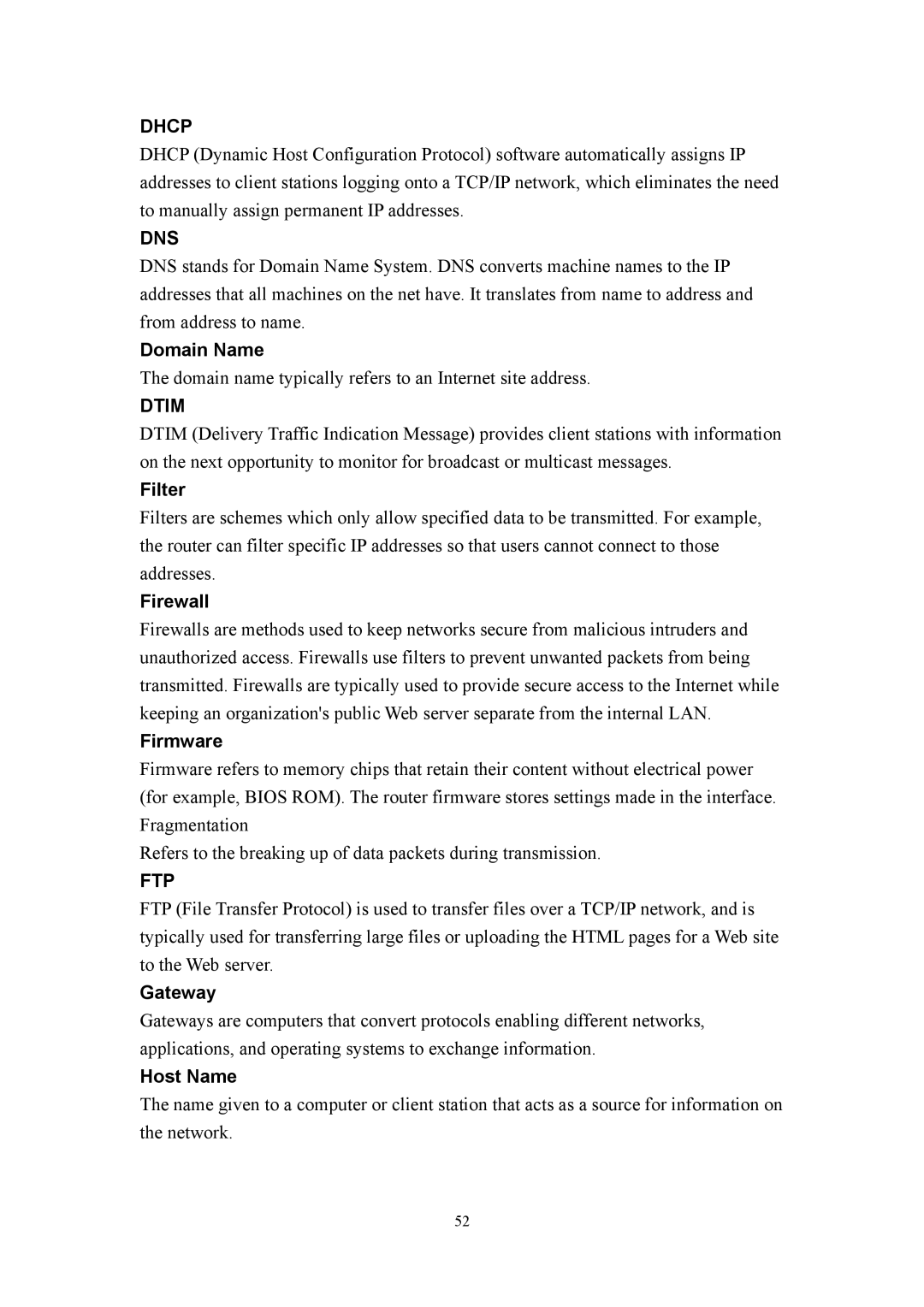DHCP
DHCP (Dynamic Host Configuration Protocol) software automatically assigns IP addresses to client stations logging onto a TCP/IP network, which eliminates the need to manually assign permanent IP addresses.
DNS
DNS stands for Domain Name System. DNS converts machine names to the IP addresses that all machines on the net have. It translates from name to address and from address to name.
Domain Name
The domain name typically refers to an Internet site address.
DTIM
DTIM (Delivery Traffic Indication Message) provides client stations with information on the next opportunity to monitor for broadcast or multicast messages.
Filter
Filters are schemes which only allow specified data to be transmitted. For example, the router can filter specific IP addresses so that users cannot connect to those addresses.
Firewall
Firewalls are methods used to keep networks secure from malicious intruders and unauthorized access. Firewalls use filters to prevent unwanted packets from being transmitted. Firewalls are typically used to provide secure access to the Internet while keeping an organization's public Web server separate from the internal LAN.
Firmware
Firmware refers to memory chips that retain their content without electrical power (for example, BIOS ROM). The router firmware stores settings made in the interface. Fragmentation
Refers to the breaking up of data packets during transmission.
FTP
FTP (File Transfer Protocol) is used to transfer files over a TCP/IP network, and is typically used for transferring large files or uploading the HTML pages for a Web site to the Web server.
Gateway
Gateways are computers that convert protocols enabling different networks, applications, and operating systems to exchange information.
Host Name
The name given to a computer or client station that acts as a source for information on the network.
52
